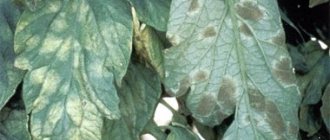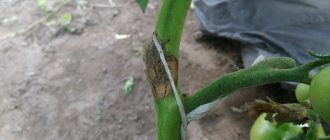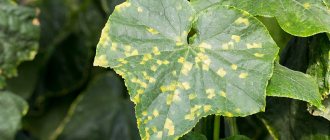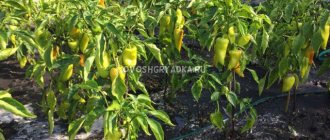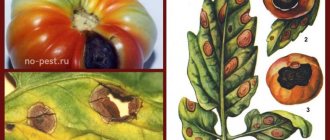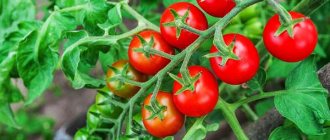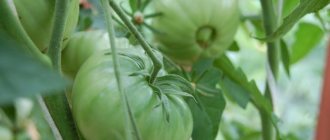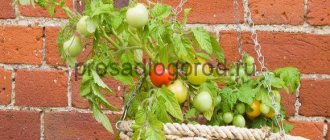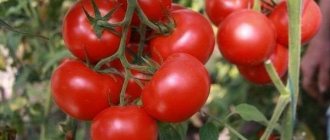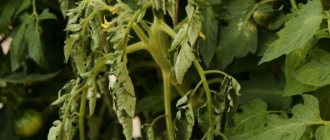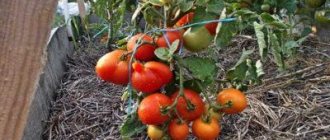Septoria also called “white spotting”. This fungal plant disease is widespread throughout the world. And not only in the southern and temperate latitudes. The disease is spreading to parts of Siberia and the Far East. The causative agents of septoria are fungi from the genus Septoria. Each crop is affected by its own fungus. And the range of plants that are exposed to infection is quite wide.
Cereals, grapes, currants, gooseberries, soybeans, apple trees, pears, quince, raspberries and many other cultivated plants are at particular risk. Septoria is also dangerous for garden flowers and shrubs. Such as phlox, rhododendrons, roses, lilacs, peonies, spirea. There is no point in specifying exactly which type of fungus affects a particular plant. Signs of plant damage by septoria are the same for all plants.
Septoria of different plants
Septoria of wheat
The peak development of septoria on wheat is observed during the grain filling period in conditions when the temperature is between 14-22 ºC and humidity reaches 90%.
White spot affects the leaves, ears and stems of wheat, on which long spots of different shades of yellow and brown form. Rainy weather contributes to the development and spread of infection. Septoria head blight of wheat leads to the fact that the inflorescence becomes brown or variegated, underdeveloped and even sterile. Protection of wheat from septoria blight is carried out primarily by agrotechnical methods: growing disease-resistant varieties, correct application of fertilizers, compliance with crop rotation, timely sowing of high-quality and healthy grain in disinfected soil. Harvesting must be followed by stubble peeling and subsequent fall plowing. Crops that are easily affected by white spot should not be grown near wheat.
Septoria barley
On barley, septoria appears in the second half of the growing season, although there have been cases when it developed even on seedlings. The signs of white spot on barley are the same as on wheat, since the disease is caused by the same fungi: not only leaf spotting can be observed, but also septoria of the ear and stems. The disease can only be combated on grain crops using preventive methods, which we described in the previous section.
Sunflower septoria
Signs of septoria on sunflower appear first on the cotyledons, then round, irregularly shaped yellow spots, subsequently browning spots spread over the lower leaves of the plant, and then appear on the upper ones. Spots on the upper side of the leaf blade are surrounded by a light border, and those that form on the lower side are surrounded by a light gray rim. Gradually, the tissue inside the spots dies and falls out, and holes form in the leaves. In some cases, the disease appears on the stems and even on the baskets of sunflowers. Unfortunately, Septoria blight on sunflower can only be controlled by preventive measures, namely the agrotechnical methods described in the section on Septoria blight on wheat.
Septoria of tomatoes
White spot also affects garden crops, such as tomatoes, and open ground plants are more likely to suffer from the disease. Of course, seedlings can also get sick; greenhouse tomatoes are not immune to white spotting, but in closed ground conditions it is easier to fight the disease, since it occurs in the form of outbreaks.
First of all, septoria blight appears on old leaves as small dark spots saturated with moisture, less often on fruits, petioles and sepals. The spots grow, reaching a diameter of 5 mm, a dark border appears around them, and the center becomes lighter. Affected leaves turn yellow and die, and this can delay the development of the plant, since it has to spend some of the plastic substances on the formation of new leaves. There were years when, due to white spotting, tomato yield losses amounted to 40-50%.
When the first signs of the disease appear, the plants are treated with Bordeaux mixture or its substitutes - the preparations XOM or Oxyx, for example. The fungicides Title, Revus and Thanos have proven themselves well in the fight against white spot. However, as we have said more than once, the most reliable protection of plants from fungal diseases is prevention, namely:
- destruction of plant residues and deep digging of the site in the fall;
- maintaining spatial isolation of tomatoes from other crops, especially those that are easily affected by fungi;
- timely disinfection of greenhouses, greenhouses, garden tools, soil and seed or planting material;
- strict adherence to planting schemes that provide air access to each plant.
And most importantly, try to grow tomato varieties that are resistant to septoria: Platus, Mondial, Horeb, Joker, Worthy, Ballad, Amico, Golden Fleece and others.
Septoria hydrangea
Septoria leaf blight can also appear on ornamental shrubs. For example, on hydrangeas. Brown spots up to 5 mm in diameter suddenly appear on the leaves of the plant. The affected leaves fall off over time, the plant loses its attractiveness, and the disease spreads to young shoots. It is better to cut off organs affected by white spot, capturing a few centimeters of healthy tissue, and the plant should be treated with Profit, Bordeaux mixture or other copper-containing preparation.
In the fall, rake from under the diseased bush and burn all the leaves and other plant debris, treat the hydrangea and the soil under it with a one percent solution of Bordeaux mixture and dig up the soil in the tree trunk circle. In early spring, before the sap begins to flow, repeat the treatment of hydrangea with Bordeaux mixture.
How to fight seedlings?
Tomato seedlings are vulnerable to a large number of diseases if not properly cared for. With high humidity and high temperatures, white spots may appear on tomato seedlings. Septoria infects seedlings through untreated soil and seeds before sowing.
It is undesirable to combat septoria on seedlings with chemicals, as they can harm those living in the house. Therefore, it is better to remove infected plants, and treat the remaining seedlings with biological agents or traditional methods that are harmless to humans and domestic animals.
Symptoms of the disease:
The causative agent of septoria leaf blight primarily affects leaves (less often sheaths and stems) throughout the growing season. It is most intensely manifested in the phases of eruption and flowering.
The first symptoms of septoria appear in autumn on the lower leaves in the form of small gray-green spots that quickly increase in size. Gradually, the spots acquire a yellow-brown color, merge into necrosis, forming a burn and the leaves die. A characteristic feature: in the center of the spot, numerous small spherical dark brown pycnidia of the fungus are formed, clearly visible to the eye. In autumn, pycnidia form on leaves creeping along the ground.
When the leaf sheath is damaged, elongated spots form on it, which soon acquire a brown color. Often the spots increase in size and cover the entire leaf sheath.
Signs of cercospora
Both types of cercospora blight primarily affect the foliage of the vineyard, but as the disease progresses, they can spread to shoots, stalks and berries. Symptoms of the spring form appear in the second half of May or June, and of the autumn form in July or August. Cercospora blight can occur both in vineyards and other crops.
Initial signs of the disease can be seen on the leaves closest to the soil. This is due to their shade and high air humidity in these places. These are the conditions that are favorable for the development of the pathogen. If the infection is severe, the foliage of the middle tier may also be affected.
Cercospora blight is characterized by the formation of a dark olive or velvety-colored coating on the lower surface of the leaves. It is loosely attached and can be easily removed with your fingers. The upper side of the leaves remains green at this time. Subsequently, oblong spots of a brownish color appear on it. Upon closer examination, you can see a yellow or dark outline around them. In addition, the attachment of the affected leaves is disrupted. They fall off even with a light touch.
When the berries are damaged, a dense, velvety olive-colored coating appears on them, which is easily erased. Subsequently, the fruits become hard and their color changes to darker. As a rule, only half of the berry is affected, the one adjacent to the stalk. Over time, infected grapes shrivel and fall off even at the slightest touch.
Control measures
Agrotechnical
- use of high-quality seed material;
- compliance with the rules of agricultural technology and technology for cultivating spring and winter wheat. (Vakin A.T., 1955)
Fungicides
Fungicides - drugs that attack fungi - differ from each other in pharmacodynamics (cellular level of action, enzymes or respiratory processes of the pathogen), spectrum (broad or narrowly targeted action). Some antifungal agents are more effective for treatment, while others are more effective for prevention. Contact fungicides act locally, upon contact with spores; Their effectiveness depends on quantity, resistance to decay, and weather. Systemic, distributed inside plants through vessels, do not depend on the weather. Therefore, the higher the rate of their absorption into plant tissue, the better.
Khometzin
Homecin or cuprozan is a mixture of copper oxychloride and cineb, a contact fungicide, used for the prevention of septoria. Fruiting bushes are treated before flowering and after harvesting the berries. Oxychloride accumulates in the body and irritates the mucous membranes. It is dangerous for fish, low-hazard for bees, phytotoxicity is lower than that of pure oxychloride. Zineb does not irritate mucous membranes and almost does not accumulate in the body. Treatment of bushes twice a season: before flowering and after harvesting.
Phthalan
or faltan - a 50% wettable white powder, almost insoluble in water. The concentration of the working suspension is 0.5-0.7%. This is a contact fungicide that causes the breakdown of the plasma of mycelium cells. Low poisonous to humans and warm-blooded animals. Just like captan, it is specific against spots of currants and other garden crops, it is a mycostatic agent for pathogens of powdery and downy mildew due to the release of sulfur.
Kaptan
or orthocid - an odorous 50% yellow powder that does not dissolve in water, so the bushes are treated with a suspension of 0.5-0.7% concentration. Suitable for replacing Bordeaux mixture. It is almost non-toxic for animals and humans, because it penetrates into the cells of warm-blooded animals much less (2000-3000 times) than into the cells of fungi. Unlike its analogue captafol, captan suppresses powdery mildew rather than stimulates it.
Chemical
Pre-sowing treatment of seeds with fungicides.
Fungicides for dressing:
- Grandsil Ultra,KS;
- Pioneer, KS.
Timely treatment of grain crops with fungicides.
Fungicides for spraying during the growing season:
- Avaxx, CE;
- Cancel,KS;
- Atlant, KE;
- Pharaoh, KE.
Traditional methods
Although you can buy anything today, many gardeners prefer to use the good old folk recipes for pests the old fashioned way. If you use them in a timely manner, you can protect the crop and grow healthy, beautiful and strong currant bushes. The main ways to combat septoria without chemicals:
- As soon as you notice the first signs of the disease, tear off all the affected leaves and spray the bush with a solution of water and salt. To prepare the solution, take a glass of salt (regular table salt) in a bucket of water. When the solution dries, there will be a protective film on the berries.
- All fungi dislike garlic, and septoria is no exception. Make a garlic tincture and treat the bushes with it every couple of weeks. This method will not harm the plant, but will drive away pests. It is especially important to regularly treat currants with garlic for prevention during rainy seasons. To make an infusion, crush the head and fresh shoots of garlic, pour the resulting pulp with potassium permanganate, wait two hours and pour the resulting infusion into a bucket of water (warm). Leave for 24 hours and spray the plantings at the rate of 0.5 liters of solution per bush.
- Iodine can help a gardener fight fungi. This component destroys infections and accelerates the process of fruit growth. Take a liter of milk (low-fat, if homemade, then settled), a bucket of water and 20 drops of regular pharmaceutical iodine. Mix and use to spray plantings. One treatment per week will be enough.
- In order to prevent infection, you can do the following - take a copper wire, pierce the stem through it at the bottom, and lower the ends of the wire down. Experienced gardeners say that, despite its simplicity, this method does a good job of protecting currants from infection and additionally supplying the bush with copper.
- To strengthen the crop's immunity, use horsetail blades. Take 150 g of fresh herb per 1 liter of water and boil for half an hour, then strain and dilute with 5 liters of water. Spray the bushes with the resulting mixture when the sun sets. Once a month will be enough.
- A soap solution also helps against septoria. Grate half a bar of ordinary laundry soap and shake it in a bucket of water. The solution for treatment is ready.
Constantly inspect currant plantings for infection, especially if it is rainy and damp outside. If you notice something is wrong - start treatment as soon as possible, in this case it will be as fast and effective as possible.
Saline solution
Prepare at the rate of 1 glass of table salt per 10 liters of water. They need to spray the entire bush along with leaves and berries immediately after removing the diseased parts. The weather should be dry, then the solution dries quickly and forms a protective salt coating against the spores.
Sodium chloride cannot be added to the soil, and watering with salt water must be done with caution, since salinization worsens the physical properties of the soil, raises the pH to the alkaline side, reduces the availability of nutrients to the roots - making the soil unsuitable for plants. Only the above-ground parts of the plants need to be treated with salt.
Garlic infusion
Prepare a mother infusion from garlic pulp (chopped heads, leaves, husks, arrows) 200 g and warm water 2 liters. Infuse it in a warm, dark place under gauze for about a day. Then filter and dilute 1:10 (with two buckets of water). 2 g of permanganate is diluted in the working solution (a 1% concentration is obtained) and used for its intended purpose.
Regular garlic concentrate can be prepared in advance in winter. Grind the clean heads in a meat grinder, add an equal amount of water, leave in a warm place for 10 days. Strain, squeeze out the pulp, quickly seal the liquid.
They need to be sprayed frequently (once every two weeks), especially in humid summers.
Iodine solution
Mix 1 liter of low-fat milk (whey), 10 liters of water and 20 drops of iodine. Spray once every seven days.
Carefully maintain the iodine concentration in spray solutions to avoid burning the leaves.
A water-milk solution of iodine is very destructive for septoria, and as a bonus, it accelerates the ripening of currants. Iodine is also used against late blight, rot, powdery mildew, and is a fertilizer.
Horsetail decoction
Cook for half an hour over low heat from 150 grams of fresh herbs (or 100 g of dry) and 1 liter of water. Then filter and dilute in 5 liters. Use the decoction after sunset. One spray every month is enough. Bushes treated with horsetail better resist septoria and other infections. Silicic acid from horsetail decoction prevents the penetration of fungal spores into the plant, strengthening the tissues of the leaf and shoots.
To increase the adhesion of herbal decoctions and infusions to the leaves, add liquid baby soap or grated laundry soap to them.
Soap solution
A solution of laundry soap shavings in water is itself a fungicide. It’s easy to prepare: grate half a bar of soap and dilute it in a bucket of water. Soap will dissolve faster in warm water.
You can spray currants with a 3-4% ash-soap solution.
Wood ash promotes lignification of the bark of young growth: it becomes more difficult for fungal spores to infect such shoots.
A good recipe for septoria (anthracosis and spheroteca): soap 40 g + soda ash 50 g + water 10 l.
Treatment of septoria of fruit and berry crops
Septoria of apple and pear
Septoria leaf blight on pear and apple trees appears as small light brown spots, which gradually become gray, as if surrounded by a dark rim. As the disease develops, the leaves turn yellow early, become covered with necrosis, dry out and die. The consequence of white spotting is a decrease in the viability, winter hardiness and productivity of fruit trees. The disease is rare on apple trees, but pear septoria is a more common occurrence. The pathogen that causes the disease overwinters on fallen leaves, and in the spring, during rains, plants are massively infected with its conidia. Warm, humid weather promotes the development of septoria on apple and pear trees.
As a rule, trees are not specially treated against septoria. Its development is inhibited by drugs used for scab, which are used annually to regularly treat the garden before buds open, immediately after flowering, and then 2-3 weeks later: a seven percent urea solution, a one percent solution of Nitrophen or Bordeaux mixture, a two percent copper solution or a five percent solution iron sulfate.
In the fight against septoria, they also resort to the preventive measures we have already described. For those who are just planning to plant pear or apple trees, we recommend growing varieties that are resistant to scab and septoria. Today, purchasing seedlings of such varieties is not a problem. For example, apple trees of the varieties Bessemyanka Michurinskaya, Uelsi, Young Naturalist, Pobeditel, Cinnamon novoe, Zhigulevskoe, Autumn Joy and others. Of the pears, those that are almost not affected by septoria and scab are Winter Deccan, Doctor Geyo, Angoulême Duquessa, and Hardie's Butterwort.
Septoria currant and gooseberry
White spot also develops on related berry bushes - currants and gooseberries. Brown round or angular spots with a diameter of only 2-3 mm appear on the leaves of these plants, especially in dense plantings. Gradually they lighten, only the border around them remains dark. Spots may also appear on berries. If the infection is severe, the leaves will fall off. It should be said that red currants are affected by white spot to a lesser extent than gooseberries and black currants.
Treating bushes and soil in early spring, before buds begin to bloom, with a one percent solution of Nitrofen or copper sulfate helps prevent infection. If the disease has already manifested itself, destroy the infection with one percent Bordeaux mixture, colloidal sulfur or solutions of fungicides - Homecin, Captan, Fthalan - prepared in accordance with the instructions. Repeated spraying is carried out 10 days after harvesting.
In autumn, leaves from under the bushes are raked out and burned to destroy any remaining infection, and the soil around the plants is dug up in late autumn and early spring. During the growing season, keep the tree trunks clean and do not allow weeds to grow under the bushes.
Septoria raspberry
Septoria blight, caused by the pathogen Septoria rubi, can settle on raspberries, appearing as round brown spots on the leaves, reaching 2-3 mm in diameter. Gradually they turn white, but by autumn, if the disease is not dealt with, large brown spots appear on the raspberry stems, not only gradually turning white, but also cracking. A sick plant overwinters worse. In spring, the disease begins to develop even more intensely. As a result, raspberry leaves fall off prematurely, and the bushes bear fruit worse.
If you are diagnosed with septoria disease during the season, do not expect it to go away on its own. Be sure to collect and burn all plant debris in the raspberry patch in late autumn, and dig up the soil between the bushes. Next spring, before sap flow begins, treat the bush and soil with a three percent Bordeaux mixture, and before flowering and after harvesting, treat it with a one percent solution of the same preparation.
Reasons for appearance
Like other fungal infections, septoria develops in warm, humid weather. Therefore, gardeners most often encounter it during warm but rainy summers. In hot weather and high humidity, spores are spread by the wind throughout the garden area.
From infection of the plant to the appearance of the first signs of the disease usually takes from 1 to 2 weeks, the time depends on weather conditions. In windy and rainy weather, the fungus spreads as quickly as possible.
Symptoms of infection with currant septoria disease
Its obvious indicator is the white-brown spots on the leaves of the bush. At first, these spots are small in size, but if no measures are taken to treat the bush, they quickly grow and affect the entire leaf. If you look closely at the spots on the currant leaves, you will notice small black inclusions. These are the pycnidia of the fungus. Affected bushes quickly lose their attractiveness, the leaves begin to curl, the trunk takes on a brown color, which leads to the death of the bush. The danger is that septoria or white spot can affect large areas, affecting other plants along the way.
Methods of combating white spot disease on currant bushes
At the first symptoms of black currant bushes becoming infected with the fungal disease septoria, it is recommended to immediately isolate the diseased plant from the healthy one. All affected leaves and some healthy ones should be immediately removed. Spray the bushes with preparations containing copper that are harmful to infection. The first spraying is carried out before the buds open, the second after the buds open, and the third after 3-4 weeks.
Periodically inspect currant bushes and all nearby bushes for septoria infection. Remember that moist soil, dew drops and rain are excellent conditions for the development of infection!
For minor damage, carry out the following treatment measures:
- completely remove all affected areas and burn immediately;
- destroy all weeds under the bushes and dig the soil to a depth of 10 cm.
- Carry out sanitary pruning of bushes annually;
- follow planting standards;
- arrange drainage under the bushes.
To combat septoria, specialist gardeners recommend using the following chemicals:
- Copper sulfate;
- Home;
- Abiga Peak;
- Oksikhom.
All these preparations must be diluted with water according to the instructions and used to treat the soil near the root system of the currant bush at the rate of 1.5 liters per bush.
Preventive measures
Treatment of currant bush disease should begin in early spring, especially if the winter was light and warm. These measures are most likely taken to prevent a disease whose risk of development is very high. Carefully inspect the blackcurrant bushes in your area, because as a fungus, it primarily affects weakened plants that lack light, fertilizer and air. Maintain the humidity level under the bushes.
As a preventive measure, experts recommend foliar feeding with a solution of manganese sulfur twice a year - before the bushes bloom and after harvesting the berries.
1 month after picking blackcurrant berries, you can fertilize the bushes with a 1% solution of potassium salt.
Prevention of currant septoria disease is a very important stage in growing shrubs. It will help reduce the risk of infection with a fungal disease and strengthen the immune system of black currants.
Advice from gardeners
Gardeners advise monitoring the amount of nitrogen-containing fertilizers. The fact is that nitrogen is very important for the health and development of the bush. Therefore, its deficiency often entails negative consequences.
If the bushes do not have enough nitrogen, then organize fertilizing based on ammonium nitrate or urea. However, do not overuse nitrogen; its excess is also not good.
If tomatoes are growing in a greenhouse, do not forget to regularly ventilate the structure. High humidity and heat are the first “helpers” in the development of most fungi. Fresh air is important for both young seedlings and adult plants. Use vents to ventilate the greenhouse.
Find a bright and warm place in your garden; tomatoes love it. Do not place the beds in damp or low-lying areas, especially if there is groundwater nearby. In the fall, dig up the garden, remove all weeds and debris, and burn them. It is recommended to plant tomatoes in the beds after zucchini or peppers.
Pay special attention to prevention using the drug "Oxychom". Its main component is copper
In addition to tomatoes, cucumbers, hops and even grapes are processed with it. Since Oxychom is a hazardous substance, you need to wear protective clothing and gloves before working with it. In addition to the prevention and treatment of septoria, Oxychom can also fight other diseases.
Traditional methods of combating septoria
- Despite the fact that today you can purchase any chemical solutions in specialized stores to combat diseases of blackcurrant bushes, traditional methods of controlling it are losing their relevance. A reasonable combination will allow you to grow a beautiful and juicy bush with sweet berries, which will contain a lot of useful vitamins.
- The most popular and effective folk methods of combating white spotting:
- Having discovered the first symptoms of the disease on black currant leaves, you should immediately tear off the affected leaves and spray the bush with saline solution. You need to prepare it in the following ratio: 10 liters of water and 1 glass of table salt. You need to spray the bush and currant berries in dry weather. As soon as the solution dries, it forms a protective film on the berries, which will protect them from infection.
- All fungal diseases are afraid of garlic tincture. An exception is septoria. It is recommended to spray the bushes with this tincture every two weeks - it will not do any harm, but the power of garlic tincture can save the bush from infection. It is especially important to follow the recommendation in rainy summers. To prepare the tincture, you will need to crush the heads and shoots of garlic. So, take 1.5 cups of garlic pulp and fill it with potassium permanganate. Prepare a bucket of warm water and after two hours pour the garlic infusion into it. Leave in a bucket of water for 1 day and spray the bushes at the rate of 500 ml per currant bush.
- An interesting folk recipe for an iodine solution, which is not only actively and effectively able to fight fungi and infections, but also accelerates the process of ripening of shrub fruits. So, prepare 1 liter of settled low-fat milk, 10 liters of water and 20 drops of iodine. Mix everything and spray the bushes after flowering once a week.
- To prevent infection with septoria, some amateur gardeners use one interesting method - they take copper wire and pierce it through the stem of the bush at the bottom. Place the ends of the wire down. Gardeners are confident that in this way the wire can protect the bush from septoria by supplying it with the necessary amount of copper.
- In order to maintain the immunity of the blackcurrant bush, experts use horsetail decoction. To prepare the decoction, you need to boil 150 grams of fresh horsetail in 1 liter of water over low heat for 30 minutes. Then strain the broth and dilute it in 5 liters of water. Spray the bushes after sunset once a month.
- A soap solution has a good effect in the fight against septoria. Grind half a bar of laundry soap and dilute it in a bucket of warm water.
Attention! Don't forget to inspect your blackcurrant bushes daily, especially if it's rainy outside. At the first symptoms of a fungal disease, begin treatment immediately. Remember that septoria develops quickly and can completely infect the bush, which will lead to its death.
Chemicals
Fungicides will help cope with the disease at the first and extreme stages of the disease:
- “Thanos” is a fungicide with a complex effect and is resistant to being washed off by water, so plants are fully treated. Using the drug: dissolve 6 grams of the drug in a bucket of water, pour it into a sprayer and completely treat all the tomatoes in the garden. Pay special attention to the lower leaves. Processing occurs twice to consolidate the result of application. The interval between the first and second treatment is 10-14 days.
- "Revus Top" is a fungicide used in the fight against fungal diseases. At the first stage of damage, dissolve 6 grams of the drug in 10 liters of water, and in case of severe damage, double the dose of the substance, but the amount of water remains unchanged. You can spray several times during the entire growing season, maintaining an interval of 2-3 weeks.
- “Copper sulfate” is used for the treatment and prevention of fungal and bacterial diseases. To spray tomatoes, you will need to prepare a solution based on 100 grams of the substance and 10 liters of water. Treat the resulting mixture immediately, do not leave it for storage.
Advice! Buy chemicals only in specialized stores. In spontaneous markets they often sell counterfeits, which not only will not help with the treatment of the disease, but can even destroy the plants.
